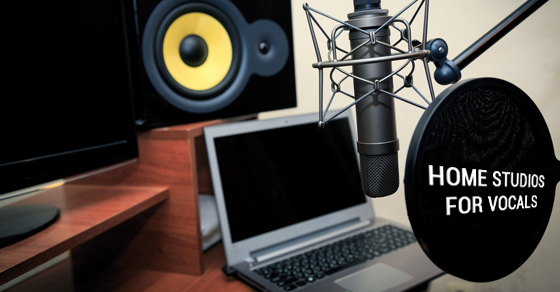Ask anyone over 40 at a guitar store and they’ll tell you that this is the best time for garage bands. Recording from home is much easier than it used to be, and almost anyone can do it.

The flip side of everyone doing something is that you have to work really hard to stand out. Sure, everyone can mix their own tracks, but how many people can turn out something that sounds pro? These tips will help you get the recording there.
1. Buy the right equipment
Buy it used, buy it new, borrow your friends’ and never give it back: it doesn’t matter the age or origin of the gear, you just need to make sure you get the right gear!
For a great at-home vocal recording studio, you’ll need the following:
- Condenser microphone
- Multi-channel preamp
- Mac computer with a current-gen processor (okay, a PC if you must, as long as the processor can take the heat of multiple tracks and effects
- Audio interface
- Headphones
- 3 XLR cables
- iPhone or iPad to remote control your gear
- A control surface
2. Set up your space
The best room for recording will have high ceilings, a lot of different surfaces, and as few walls running parallel as possible. You’ll want to record off to the side somewhere, as far from being in the direct middle of two walls as possible. If you’re too close to the middle, you will end up with a standing sound wave on your track.
After you pick a room, clean it of vibrating objects. These will include framed pictures or posters, knick knacks, and other clutter that will move with sound. Tighten up any screws in the door knobs, take the doors off the closets, and cover the windows.
3. Break out the acoustic treatment!
Acoustic treatment is where a lot of home recorders skimp, but most end up paying for doing so in the long run. Good acoustic treatment is important to keeping echoes off the track and to giving you a clean sound.
To start, make or buy acoustic panels. Add panels every few feet on nearby walls including the one behind you to start. If that’s not enough, build or buy a diffuser to put directly behind you and sill up your corners with bass traps.
4.Record, readjust, and record again
The only way to find out if your recording efforts are successful is to record and see how it sounds. It could turn out that you’re in the wrong room, or that you need more acoustic treatment. Readjust your room if necessary until you have a quality you’re happy with!
